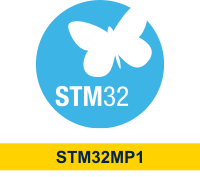This article provides a few tips for easy reading of this user guide.
1. Browsing[edit | edit source]
Chrome and Firefox browsers are recommended.
The user guide contains hundreds of articles (aka pages). As for any wiki website, an article might refer to tens of other articles, which might themselves refer to tens of other articles (and so on). It may be tempting to follow these links at the risk of moving away from the original article.
The articles are designed to be, as far as possible, self-sufficient.
With this in mind, it is good practice to keep the main article open in your browser, and to open any article linked by the main article in a new browser tab. Focus on the main article is hence maintained.
2. Links[edit | edit source]
Any link, either to an article of the user guide or to an internet website, appears in blue.
Example:
- Link to the user guide Main Page.
- Link to the STMicroelectronics website. Note the arrow icon that shows that the link leads to another site.
3. Image, clickable image and clickable image maps[edit | edit source]
An image might be:
- a normal image - the image doesn't link to any destination
- a clickable image - the entire area of the image links to a single destination
- a clickable image map - some areas of the image link to multiple destinations
Move your mouse pointer over the images below to see what the mouse pointer and the display looks like for each image.
| Normal image | Clickable image | Clickable image map |
|---|---|---|
| The image below simply shows the logo for the STM32 MP1 Series | If you click on the image, you are redirected to the user guide main page | If you click on the butterfly, you are redirected to the user guide main page.
If you click on "STM32 MP1", you are redirected to the STMicroelectronics website (st.com) |
 |
 Example of clickable image map |
4. Commands[edit | edit source]
Any command that is executed on the board (through the remote Terminal or the Wayland Terminal) starts with , while any command executed on the host PC (through the local Terminal) starts with .
Example:
pwd
means that the "pwd" command shall be executed on the board: it will print the name of the current directory on the board.
pwd
means that the "pwd" command is executed on the host PC: it prints the name of the current directory on the host PC.